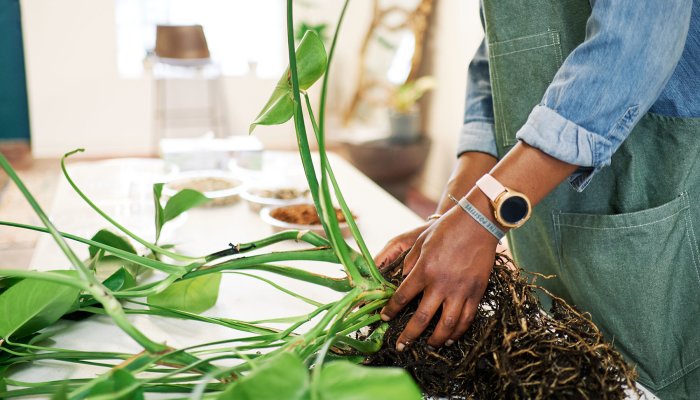This Root Structure Is A Sign That Your Houseplant Is Having A Glow Up

“Aerial roots are on epiphytic plants, so plants that can grow in soil but can also grow on rocks, up trees, or on any other formations that are out in their native habitat,” Marino told me.
That would explain why my Monstera—a plant that climbs tropical trees in its native habitat—was starting to grow them. Marino added that in addition to helping plants climb towards life-giving sunlight, these aerial roots also provide the plant with an extra energy source. “These roots are helping the plant absorb more nutrients in its natural habitat,” she explained, by sucking up nutrients and moisture that’s blown around in the wind.
Distinguishing between these roots and underground roots that are peeking above the surface (and are a sign your houseplant needs a larger pot) is pretty straightforward: aerial roots tend to sit further up on a plant stem and they look thicker, more mature, and potentially darker than your typical roots. They may also pop up at the end of trailing vines, unlike overgrown ground roots that will just sit on the surface of the soil.
This article was originally published by mindbodygreen.com. Read the original article here.




